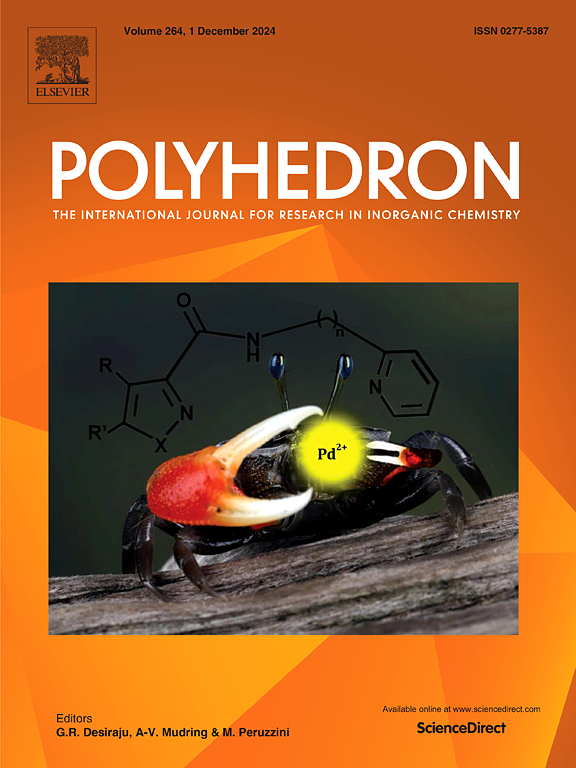Transition metal complexes of N-furfuryl-N′-benzoylthiourea: A study of synthesis, antibacterial activities, quantum chemical calculations and molecular modeling simulations
IF 2.4
3区 化学
Q2 CHEMISTRY, INORGANIC & NUCLEAR
引用次数: 0
Abstract
The biological activity of acylthiourea compounds, which interact with biological systems due to their molecular structure and redox properties, is generally enhanced when converted to metal complexes. A novel series of five complexes with the formula of Na[ML2(N3)X] [M = Co(II) (1), Ni(II) (2), Cu(II) (3)] and K[ML2(SCN)] [M = Ni(II) (4), Cu(II) (5)] were synthesized using N-furfuryl-N’-benzoylthiourea (HL) with the aim of developing potential antibacterial reagents. The structure of the complexes was elucidated using elemental analysis, IR spectroscopy, thermal analysis, as well as molar conductance, and magnetic measurements. The results indicated that the N-furfuryl-N′-benzoylthiourea ligand behaves as a monobasic bidentate SO ligand. The antibacterial activity of the complexes was evaluated against Gram (+) and Gram (−) bacteria. The copper(II) complexes showed the highest antibacterial activity. Quantum chemical calculations of the complexes were performed at the DFT/B3LYP level of theory using the LANL2DZ basis set, which includes the effective core potentials for metal atoms, and the 6-311G(d,p) basis set for non-metal atoms. The geometric parameters, molecular electrostatic potential diagrams, total density of states and frontier molecular orbitals of each complex were calculated. Molecular docking simulation demonstrated the interactions of the compounds with two selected enzymes, β-ketoacyl-ACP synthase III, and lipoteichoic acid synthase, key enzymes for bacterial survival. Based on the binding energies, copper(II) complex had the best antibacterial activity. The best binding energy was between complex 5 and 1HNJ with an energy value of −9.2 kcal/mol. Molecular dynamics simulations confirmed the stability of the Complex 5-1HNJ couple under physiological conditions.

求助全文
约1分钟内获得全文
求助全文
来源期刊

Polyhedron
化学-晶体学
CiteScore
4.90
自引率
7.70%
发文量
515
审稿时长
2 months
期刊介绍:
Polyhedron publishes original, fundamental, experimental and theoretical work of the highest quality in all the major areas of inorganic chemistry. This includes synthetic chemistry, coordination chemistry, organometallic chemistry, bioinorganic chemistry, and solid-state and materials chemistry.
Papers should be significant pieces of work, and all new compounds must be appropriately characterized. The inclusion of single-crystal X-ray structural data is strongly encouraged, but papers reporting only the X-ray structure determination of a single compound will usually not be considered. Papers on solid-state or materials chemistry will be expected to have a significant molecular chemistry component (such as the synthesis and characterization of the molecular precursors and/or a systematic study of the use of different precursors or reaction conditions) or demonstrate a cutting-edge application (for example inorganic materials for energy applications). Papers dealing only with stability constants are not considered.
 求助内容:
求助内容: 应助结果提醒方式:
应助结果提醒方式:


